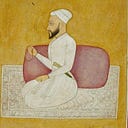
Above is a genetic PCA chart constructed from Harappa Admixture scores. Population averages were used rather than individual samples.
The purpose of this piece is to share what I’ve learned about Pashtun genetics. Based on the samples I’ve collated, Pashtuns form at least 3 broad genetic clusters.

Pashtun South: This group likely formed the early core of the Pashtun population, and later expanded north and east in the wake of the Islamic-era Turkic invasions. They genetically cluster midway between Eastern Iranians and Punjabis, which is fitting as their region has traditionally existed as a buffer between the greater Indian and Iranian civilizations. Samples for this cluster primarily came from Kandahar, Paktia, Quetta, and Waziristan.
Pashtun North: This group was likely formed sometime between the 11th and 13th century, following the Ghaznavid (and later Ghurid) expansion through Southern Afghanistan into the Kabul Valley, which would facilitate the movement of Pashtuns into the region. Traditionally this region has been the westernmost frontier of Indian civilization, though it has frequently been contested by both West and Central Asian powers. Samples for this cluster came from Kabul, Laghman, and Mohmand.
Pashtun East: This group is the likely result of Islamic-era Pashtun migrations into the Indus Valley, resulting in the, “Pashtunization” of previously Punjabic and Dardic speaking populations. This group was the last of the three to form, but from a population standpoint is the largest. Samples for this cluster came from Swat, Kurram, and Peshawar.
There is likely a fourth Pashtun cluster (Pashtun West), that bridges the gap between Southern Pashtuns and Khorasani Iranians. I only have one sample from this possible cluster (a Pashtun from Herat), so didn’t feel comfortable plotting him until I have more individuals to confirm my theory.
That’s all for now. This is a work in progress, conclusions may change as more data comes to light. Feel free to ask questions!
